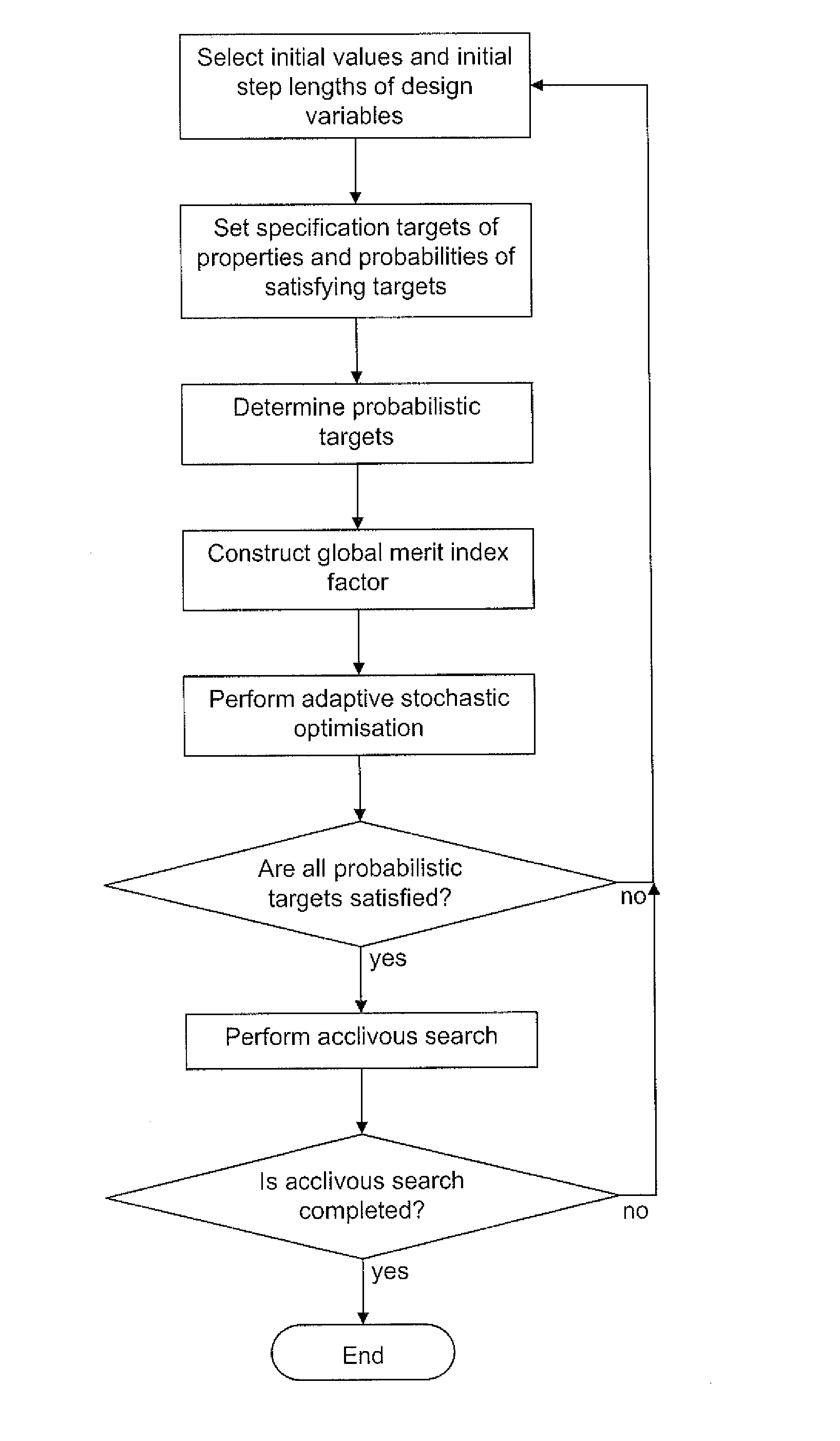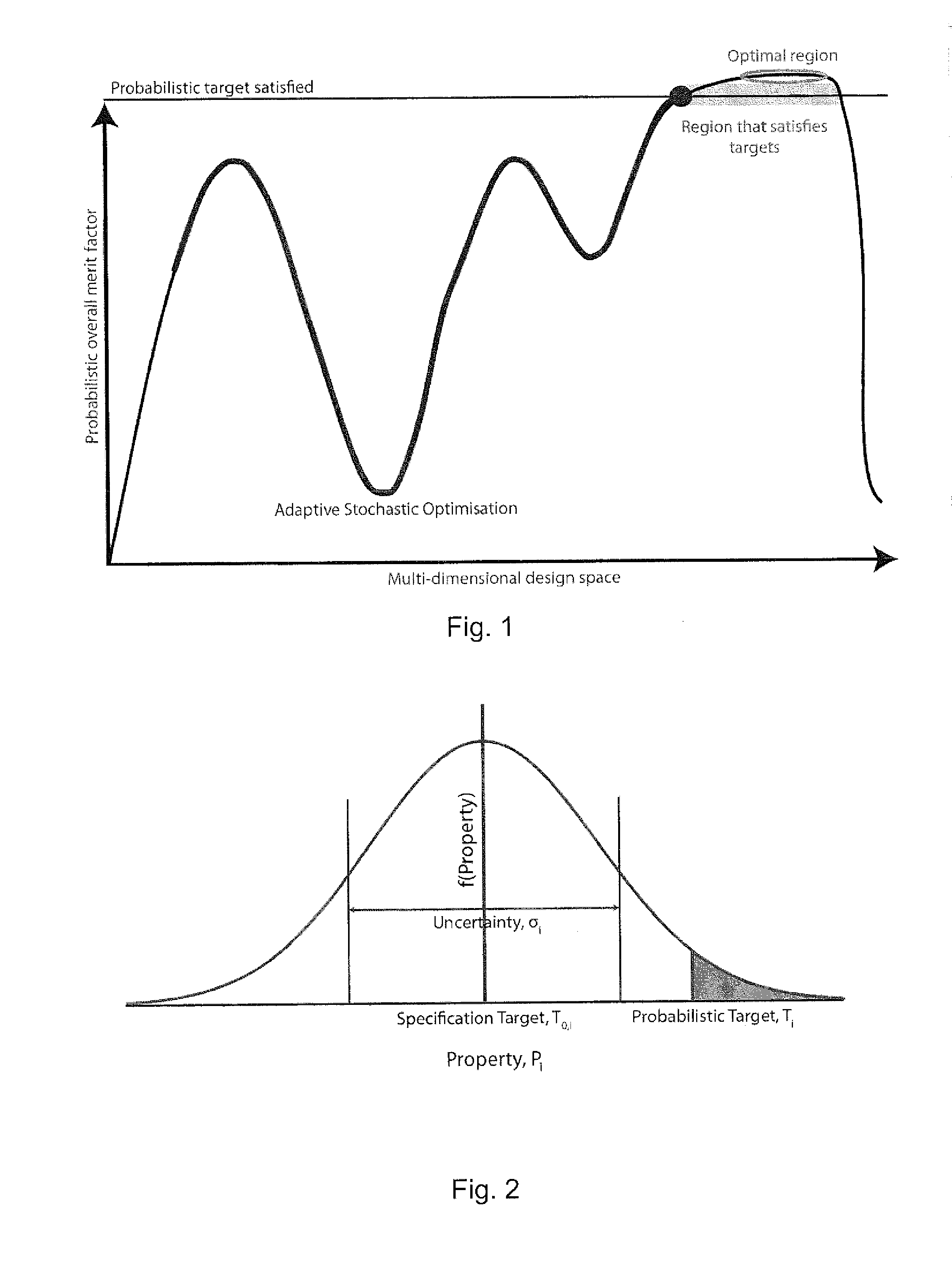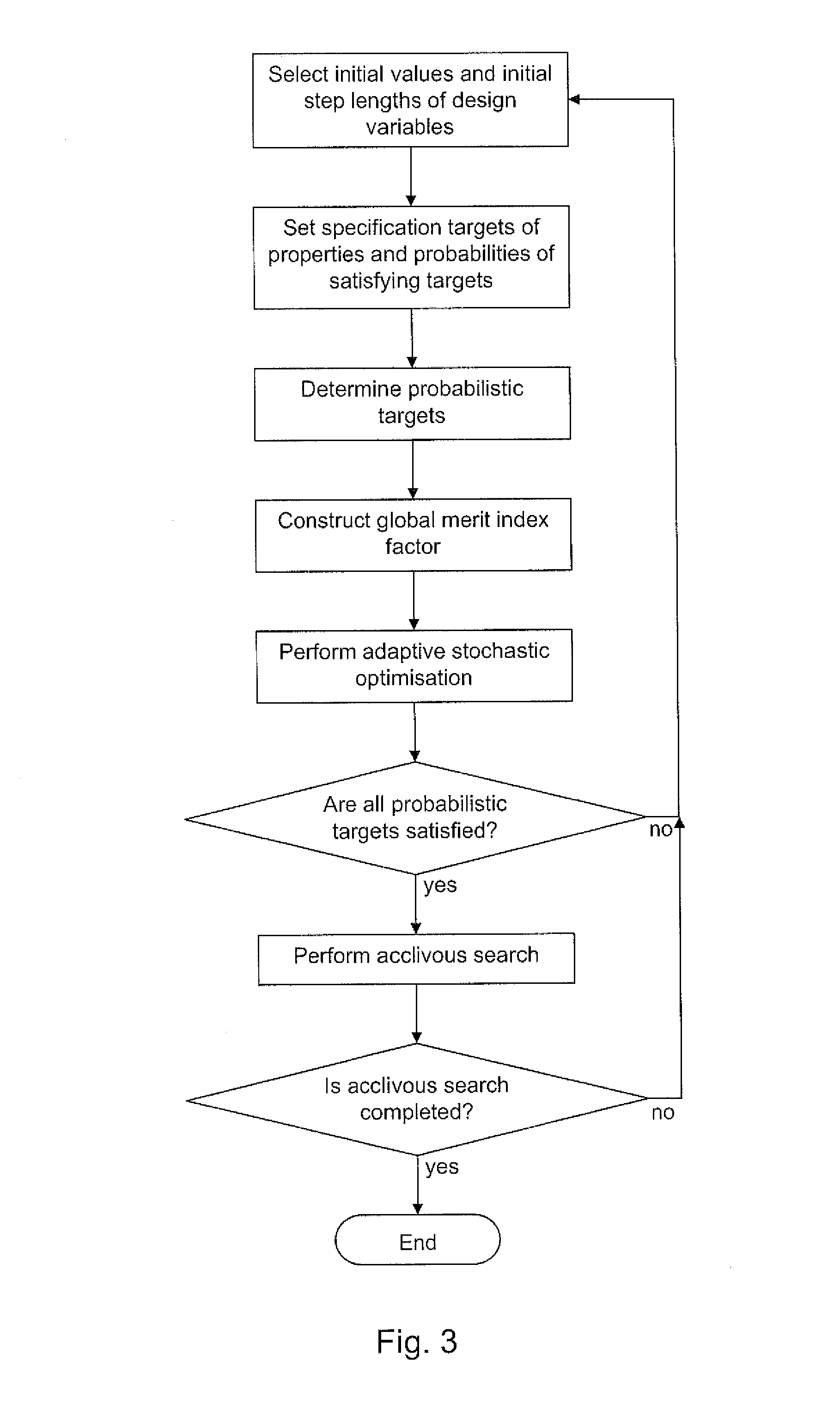Method and system for designing a material
a material and design technology, applied in the field of methods and systems for designing materials, can solve the problems of significant disadvantages of material optimisation approaches that do not take into account the uncertainty of model properties
- Summary
- Abstract
- Description
- Claims
- Application Information
AI Technical Summary
Benefits of technology
Problems solved by technology
Method used
Image
Examples
Embodiment Construction
[0041]The present invention provides a probabilistic and automated approach to material (e.g. alloy) optimisation. The optimisation can find, within a design space encompassing all possible composition and processing conditions (design variables), a composition and set of processing conditions that are predicted to produce a material capable of exceeding, by a user-defined probability, a set of material property specification targets. Once an optimal set of design variables is found, an acclivous search can then be conducted to explore the boundaries of multi-dimensional design space which satisfy the specification targets.
[0042]A schematic illustration of the approach is shown in FIG. 1, whereby a single overall description of the material's likelihood of exceeding the specification targets, the “probabilistic overall merit factor”, is constructed as a function of multi-dimensional design space, taking into account uncertainty in property models, and then optimised using an efficie...
PUM
 Login to View More
Login to View More Abstract
Description
Claims
Application Information
 Login to View More
Login to View More - R&D
- Intellectual Property
- Life Sciences
- Materials
- Tech Scout
- Unparalleled Data Quality
- Higher Quality Content
- 60% Fewer Hallucinations
Browse by: Latest US Patents, China's latest patents, Technical Efficacy Thesaurus, Application Domain, Technology Topic, Popular Technical Reports.
© 2025 PatSnap. All rights reserved.Legal|Privacy policy|Modern Slavery Act Transparency Statement|Sitemap|About US| Contact US: help@patsnap.com



